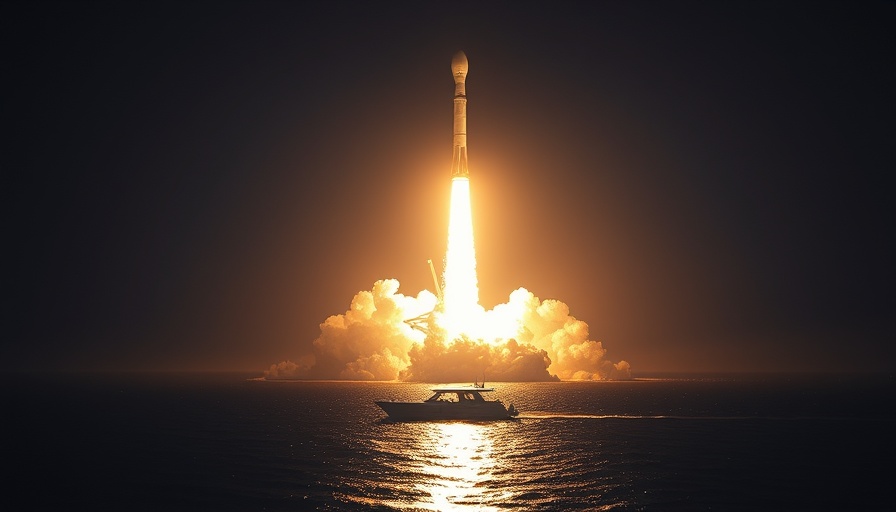
Why SpaceX's Starship Flight 8 Failed: A Detailed Analysis
As the excitement builds for the upcoming Starship Flight 9, SpaceX has taken a significant step in understanding the failure of its previous test flight, Flight 8, which launched on March 6 from the company’s launch facility in Texas. The investigation sheds light on the intricacies of rocket engineering, revealing how even minor malfunctions can lead to major failures.
What Went Wrong? Understanding the Flash
During Flight 8, SpaceX experienced a catastrophic incident involving a 'flash' in one of the Raptor engines located in the spacecraft's 'basement,' as described by the company. While Flight 7 succumbed to a fire in its upper stage, Flight 8's demise was traced to what SpaceX termed as "inadvertent propellant mixing and ignition" in one of the center Raptor engines.
The flash initiated a sequence of unfortunate events: the engine shut down, followed by a domino effect causing two additional Raptor engines to lose thrust. This resulted in the Starship tumbling uncontrollably, eventually triggering its automated flight termination software to self-destruct around two minutes post-initial flash. Understanding this sequence is critical for future missions as SpaceX iterates its designs and processes.
The Broader Implications of Rocket Failures
Failures in aerospace technology, while alarming, often serve as vital learning opportunities. Each explosion or malfunction provides engineers with insights that can lead to improved safety and reliability in future designs. As SpaceX acknowledged, the hardware failure in the center Raptor engine of Flight 8 is a case in point. The knowledge gained from this investigation is invaluable, illustrating how unforeseen issues can arise even in meticulously designed systems.
Moreover, these failures remind us of the challenges inherent in pushing the boundaries of technology and innovation. They underscore the importance of rigorous testing and quality assurance in the aerospace sector, where the stakes are astronomically high.
Looking Forward: Steps to Enhance Safety
In light of these findings, SpaceX is taking proactive measures to prevent similar occurrences in upcoming flights. The company revealed that it has "reinforced the affected components" to address the thermal issues that caused the ignition problems.
The ongoing commitment to innovation while learning from past failures is a hallmark of SpaceX's culture. As the field of space exploration advances, the lessons drawn from Flight 8 will undoubtedly contribute to enhanced designs and protocols, driving the industry forward.
Conclusion: The Journey of Innovation Continues
SpaceX's continuous quest for innovation amidst challenges encapsulates the dynamic nature of the aerospace industry. With each flight comes a fresh set of learnings that refine technology and processes, ultimately fostering advancements that push human boundaries in space exploration.
As we anticipate the future, the knowledge gained from these unfortunate events will be instrumental in shaping a safer, more reliable space travel experience.
For those eager to follow engineering breakthroughs, keep an eye on SpaceX as they prepare for Flight 9, armed with insights from their journey.
 Add Row
Add Row  Add
Add 




Write A Comment